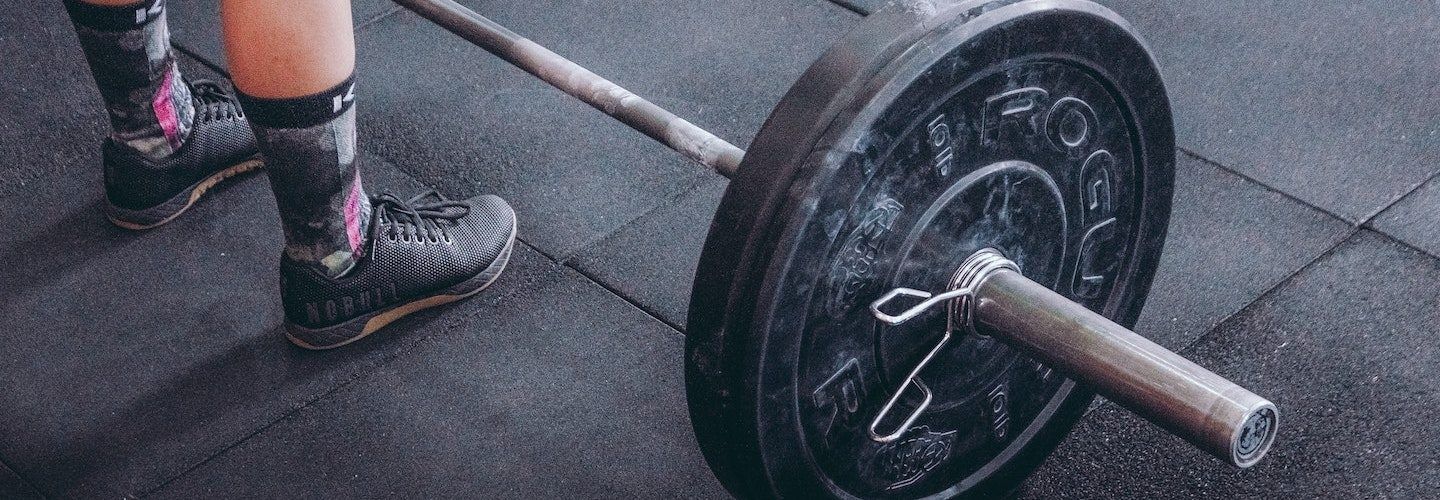In this “Ask Me Anything” (AMA) episode, Peter shares his current workout regimen and how he incorporates blood flow restriction (BFR). He walks through the mechanics and fundamentals of some of his favorite lifts including squats, deadlifts, and hip thrusters and stresses the relative importance of each in the context of longevity. He touches on the relative importance of muscle size vs. muscle strength and discusses the impact of fasting on muscle mass and the potential tradeoffs during aging. Peter then dives into the topic of testosterone replacement therapy (TRT) for both men and women, starting with a clinical discussion around how he actually replaces testosterone in patients. He explains the targets of this therapy as well as the risks and benefits, and he gives his interpretation of current data on the association between TRT and heart disease.
If you’re not a subscriber and listening on a podcast player, you’ll only be able to hear a preview of the AMA. If you’re a subscriber, you can now listen to this full episode on your private RSS feed or on our website at the AMA #32 show notes page. If you are not a subscriber, you can learn more about the subscriber benefits here.
AMA #32 Sneak Peak:
We discuss:
- Peter’s current exercise routine [2:25];
- How Peter incorporates blood flow restriction (BFR) into his workouts [5:45];
- Relative importance of muscle size vs. muscle strength [16:45];
- Comparing squats to deadlifts and why both are important [22:00];
- Squatting technique and fundamentals [31:15];
- Important cues to look for while lifting weights [38:30];
- Proper mechanics of a deadlift [42:00];
- Hip thrusters as an alternative to the squat or deadlift [44:00];
- Split-leg work for simulating activities of daily living [47:00];
- The impact of fasting/calorie restriction on muscle mass and the potential tradeoffs to consider [49:45];
- Testosterone replacement therapy: Considerations when contemplating TRT and Peter’s approach with patents [54:30];
- Data on the association between TRT and heart disease [1:04:15];
- TRT for women—risks and benefits [1:06:45];
- Impact of fasting on testosterone levels [1:13:45]; and
- More.
Peter’s current exercise routine [2:25]
A few previous podcasts on exercise:
***
Peter’s current exercise routine
Cardio – Tuesday, Thursday, Saturday, Sunday are cardio days
- Tuesday, Thursday, & Sunday are zone 2 on a bike (for 45 minutes)
- Saturday is either:
- A) Zone 2 followed by Zone 5 (separate workouts)
- So a 45 minute zone 2 and then a 30 minute zone 5 done immediately after zone 2
- B) Alternatively is just a longer bike ride on Saturday and make it more of an anaerobic workout
- A) Zone 2 followed by Zone 5 (separate workouts)
Lifting – Monday, Wednesday, Friday, Sunday
- About 9 months ago he switched to an upper body, lower body split (Previously he was lifting three days a week and would do upper body, lower body every day)
- Nowadays, lower body is Mon and Fri
- Upper body is Wed and Sun
What happens if you miss a day?
- He will never miss a lifting day
- Sometimes he’ll have to miss a cardio day
“I will always get those four lifts in during the week, no matter what. And sometimes it just means moving the days around or doubling up on a different day.” —Peter Attia
Time of day
- Little more flexible on weekends, but Monday through Friday, pretty much no flexibility
- He always lifts weights in the morning around 7:15 or 7:30 AM
How Peter incorporates blood flow restriction (BFR) into his workouts [5:45]
*See Jeremy Loenneke episode for more on BFR
***
How Peter incorporates blood flow restriction (BFR) into his workouts
{end of show notes preview}




Did I hear you correctly, “I always lift after doing cardio”? If so, you are lessening the efficacy of your lifting program as you deplete the necessary glycogen stores doing so. As a woman that has squatted 405 pounds and leg pressed over 1,0000, has been in the weight lifting world for forty years and still going safely strong at 66, you sound seriously over trained. It’s not about the volume of work you do but about how precise you are about lifting.
What about pellets for TRT for men? You don’t mention it.
Thanks so much for bringing attention to the world of BFR training. I am a PT who uses it clinically and there are so many people who could benefit from it. I would strongly recommend you try to use the KAATSU system. The cuff design and approach to vasculature physiology are significantly better than the other BFR alternatives. I started using BFR with a simple blood pressure cuff and have been trained to use the Delfi (Owens Recovery Science) and Smartcuff systems as well. KAATSU is the one that has been the best for myself and my patients. I’d be happy to go into more of the differences between the various BFR devices.
As a practicing physician I get requests for TRT constantly. And there are clinics in our community that “pellet” people so that their testosterone is beyond the assay’s upper limit of normal. Almost none of the people requesting TRT have optimized sleep, movement, nutrition, stress, etc. As with anything, stating goals is the most important thing to begin with and the clear goal stated in these podcasts is longevity/”centenarian olympics”. I’m curious how testosterone fits with that stated goal. One of the compounds that has shown a longevity benefit is an estrogen derivative. While a man with a naturally occurring testosterone in the 80th percentile will be better off than someone in the 20th percentile. It is not clear to me that supplementing from 20 to 80 has the same benefit. This is analogous to the conversation with Rick Johnson recently. BP of 115/70 is better than 135/85. But treating down to 115/70 is harmful. There is a path dependence that matters: the optimizing nutritional/exercise to get to 115/70 or 80th percentile T is much different than an external intervention to get there. I think of this in terms of Nassim Taleb’s “via negativa” principle. Removing harmful things to get to a goal has only positive side effects. If we try to intervene (especially with a medication) in a mostly healthy person the second order side effects are going to dominate and potentially do more harm than good. I’m not anti-medicine. I use statins, BP meds, metformin, GLP1s etc. But those are for people who have told me “I’m not going to exercise, eliminate sugar, sleep, etc.”. Long rambling comment, but seems important to address when we are trying to use interventions to get incremental benefits. Thanks.
Correction: I said above assay’s “upper limit of normal”. That should have been “above limit of detectable”. >1500 ng/dL is the most recent total I saw.
Are there doctors in other parts of the country (I’m in Denver) that have practices similar to yours? Are you taking new patients in your practice?
Nick is a good addition. He brings a new approach and has a radio voice. Thanks.
Would you please list/show the completed Centenarian Olympics exercise/activity list. Please consider an episode for older people with problems such as past disc and incomplete recovery from the surgery. Show modifications for people who don’t have a personal gym and all the equipment. This could be Kettlebell, clubs and bands.
I just wanted to second that. Nick was well prepared, kept the focus of the AMA, did not invite tangents, and overall struck the right tone/balance for with I as a subscriber expect from AMAs. I like it when Peter’s response starts with “thats a tough one…”. Peter’s hard examined stance on under what conditions to favor CR vs. muscle growth in various types of people at different ages was one of the best and definitive answers on a difficult subject so many of us have struggled to reconcile. It was an excellent response from Peter and Nick got it out of him. Continue the good work Nick!
Regarding finger pull ups, didn’t you mentioned a “device.” curious.. I’m a rock climber… I do all sorts of finger/campus boards
I’ve heard conflicting recommendations about post-exercise fueling for women specifically. Are you familiar with Dr. Stacy Simms? She swears by the “golden window” for refueling for women- “the time right after exercise when your insulin levels peak, opening multiple metabolic pathways to expedite your glycogen storage and muscle repair process.” Here’s the post: https://www.drstacysims.com/blog/nail-your-golden-recovery-window-for-optimum-health-and-performance Thoughts?
What is Peter’s opinion on calisthenics exercises, such as exercises using gymnastic rings or parallettes (e.g. support position on rings, ring rows, ring pull-ups, ring dips, ring muscle-ups, L-sit using parallettes or rings, planche using parallettes or rings). Also, which pull-up variations (e.g. wide grip, narrow grip, neutral grip, chin-up) should one incorporate into workouts and what is the ideal hand position when performing them.
I would be curious for more of an intro to Nick. In particular about his background, interests, and how he came to be working with the practice.
I take it he doesn’t follow the Bruins.
I listened to this AMA with interest, I am in my early 60’s and pretty active. I walk 2-3 times a week at lunch to do zone 2 (I use tickrx to monitor HR) plus longer hikes on the weekends. Anyway, working out has always bored me as I prefer to be out in nature, but I’m sold on the need to build muscle strength. Additionally, I had a work accident 20 yrs ago which resulted in fused L3,4,5, and a broken right Calcaneus which limits Dosiflexion. You mention the wedges with a safety bar which seems to address 2 issues (based on brief research), reducing torque on the lumbar and the other the Dorsiflexion. If I really want to do it properly I feel like I need a trainer initially, but there seem to be a lot of quasi-trainers. I’m looking for recommendation for a program that can be done at home provided by a legitimate trainer/program that is skilled enough to accommodate my injuries. Any thoughts or recommendations?